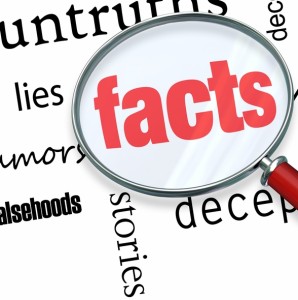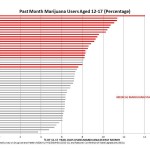
You can try to erase the data, but you cannot change the truth.
The Medical Marijuana Industry Group is just the latest organization dedicated to influencing policy and policymakers in the goal of corporate greed–this time in profit from marijuana addiction.
This corporate marijuana lobby, in its latest deception, issued in June a list of data that is a gross misrepresentation of the facts as it relates to youth use rates and crime statistics in Colorado.
Does drug policy affect the levels at which young people use mind-altering drugs? History has shown that, yes, indeed it does. Not only are youth use rates highest in the United States in “medical marijuana states”, but elsewhere in world, Sweden for example, each time the country softened its drug laws youth use went up, along with public health harms.
This year, several states failed to produce reliable data on youth use rates for marijuana. Among those we now cannot measure easily are Colorado and Washington.
These two states were the first to legalize marijuana for recreational use under ballot initiatives fueled and funded by a national marijuana legalization lobby. The impact on kids in those states just got harder to measure against their peers nationally. But reports on the ground say Denver alone has the nation’s highest rate of 8th graders using marijuana . This coincides with new evidence that marijuana use is strongly associated with structural changes the developing brain and lowers IQ by up to 8 points for users who begin in adolescence.
We already knew that youth pot use is highest in states with looser marijuana laws. It doesn’t take a rocket scientist, or a neuroscientist, to guess that where more marijuana is available, more is getting into the hands of young people. It is common knowledge in the drug-abuse-prevention world that when perception of harm or risk goes down, and when availability and social acceptance of drugs go up, more young people use drugs.
Here’s a look at states that have that approved marijuana as medicine — even though no major medical society in the developed world calls for its use:

18 of the top 20 states for youth use (ages 12-18) were “medical” marijuana states. Under such a scheme in 2011, in one Denver teen drug-addiction-treatment center, 74% of teens had gotten their pot from a medical marijuana “cardholder” an average of 50 times.
Marijuana industry reports claim that there have been no changes in youth use in Colorado — a clearly bogus spin on the information because there’s no valid data to base it on. They are also claiming lower crime rates and automobile death rates — also bogus claims based in cherry-picking of the data using absent or incomplete data sets.
When it comes to crime clearly they are cherry-picking data. Marijuana industry interests report that violent crime is down by 2.5% in the first five months after pot legalization. Here’s a closer and wider look at the actual statistics.
Addiction for profit policy schemes are always suspect. When creating drug dependency, the truth in valid statistics can be easily avoided, erased or ignored. At least that’s what we we seem to be seeing in Colorado and Washington. Why don’t they want to know how their kids are faring in the Wild West of drug liberalization laws — especially compared to children living in other states?